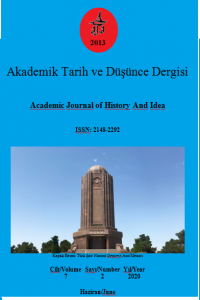Erken Tarihte Sosyal ve Kültürel İletişim ve Dinlerin Yükselişi
Antik çağda, sosyal iletişim ve bilgi alışverişi süreci klasik tarihçiler tarafından incelenmedi veya daha doğrusu "ilgi merkezinde değildi. Uygarlığın şafağında, insanların doğa ve insan hakkında çeşitli soruları, bunlara ek olarak, çeşitli sorular vardı. Günlük ihtiyaçlar, etkileşim içinde tartışılmış ve "bilim"in yokluğunda "kelimeler ve yorumlar" iletişimin temelini oluşturmuştur.Bu kelimeyi yorumlayanlar "akıllı" oldular ve kısa sürede üstünlüklerini ilan ederek kendilerini diğerlerinden ayırmaya başladılar. Rahipler, vaizler, keşişler, dervişler böyle ortaya çıkmış ve ilahi hikmetin taşıyıcıları olarak oluşmuştur. Uzun bir süre insanlar dünya ve yaratılışı hakkında bilgiye tahammül ettiler, yeni bilgileri kabul ettiler ve yeni doktrinler yarattılar.En eski tarihsel dönemden itibaren insanlar arasındaki sosyo-kültürel iletişimin bir sonucu olarak "bilgi"nin ortaya çıkması, " mübadiləsi " ve artması farklı bir dünya görüşü oluşturmuş, bu da dinlerin, dini düşünce sistemlerinin ortaya çıkmasına neden olmuştur. Zerdüştlük, Hint dini inançları ve İbrahimi dinlerin birçok ortak özelliği, çok eski zamanlarda dinler arası sosyal ve kültürel iletişimin varlığını düşündürür. Makalenin amacı, toplumsal iletişim süreçlerinin kültürel ve tarihsel süreçteki evrimini incelemek ve dinlerin ortaya çıkışının tarihsel ortamını belirlemekti. Tarihsel verilerin analizi, tam bir abarijinal din kavramının olmadığını ve insan toplumunun, genel olarak bilinen temel bilgilərə dayalı dini düşünceyi oluşturduğunu göstermektedir
Anahtar Kelimeler:
Zerdüştlük, Avesta, sosyal iletişim, mitraizm, anahid, dini hibrid.
Formation of Religion - Social And Cultural Communicatıon in Early History
In ancient times, the process of social communication and exchange of information was not studied by classical historians, or rather, was not in the center of attention. At the beginning of civilization, various questions of people about nature and man, in addition to everyday needs, were discussed in interaction, and in the absence of science, "words and interpretation" formed the basis of communication. The people who proclaimed and interpreted the divine source of the Word became "wise" and soon began to distinguish themselves from others, claiming their superiority. Thus, priests, priests, preachers, monks and dervishes were formed as carriers of divine wisdom.We can assume that first the Logos (word), then the sages who were the carriers of "thoughts" (information), then associations, organizations, and then alliances were formed between them. These unions were to either become religious communities with limited activity, or grow at the expense of state power. Many materials from ancient mythology confirm this "idea". We see that the ancient sages (that is, the bearers of wisdom) were extremely "tolerant." These sages, who are open to new ideas, listen to different ideas, accept them, combine them into a single doctrine, try to understand them when contradictions arise, and thus new concepts arise. Religious doctrines are the result of a "cultural hybrid".
Keywords:
: Zoroastrianism, Avesta, social communication, Mithraism, anahid, religious hybrid.,
___
- BLAVATSKAYA E.P., "Zoroastr ın" hıstory "and zaratushtra ın the secret annalah" article, https://www.youtube.com/watch?v=rNNVhqPN9Yw ( 15.03.2021).
- Dexoda, logetname, Iran,Tehran, 1372.(Explanatory dictionary of Persian language / compiler Dexoda).
- KAZIMI, P., Türk xalqlarının kitab və kitabxana mədəniyyəti, Mütərcim, Bakı 2014.
- NIETZSCHE, F., So said Zarathustra, https://www.youtube.com/watch?v=tayf_aSHWEw ( 15.04.2020).
- The Avesta, The Holy Writing of Zoroastrianism. Hymn Mitre, Age Ten. Mihr Yasht, Audiobook,https://www.youtube.com/watch?v=kUnMSKB90Ts (15.03.2021).
- The Bible, Kniqi svyashennoqo pisanie Vetxoqo iNovoqo Zaveta, Moskva, 2005
- Yayın Aralığı: Yılda 6 Sayı
- Başlangıç: 2013
- Yayıncı: Hakan YILMAZ
Sayıdaki Diğer Makaleler
Bəxtiyar Vahabzadənin şeirlərində milli-mənəvi yaddaş
Osmanlı Devleti Zamanında Trablusgarp Vilâyetinde Askerî Okullar ve Kışlalar (XIX. Yüzyıl)
Jomma GH DAW ALWARSHFANİ, Cevdet YAKUPOĞLU
Amerika ədəbiyyatinda detektiv janrin əsas ideoloji aspektləri
The Times Gazetesinde Gorbaçov’un Glasnost ile Perestroyka Politikalarını Uygulaması
Türkiye-İsrail İkili İlişkileri ve 1958 Antlaşması
Slav Kültüründe Bazı İnanış ve Törenlerde Kırmızı Renk
Türklerde Bayrağın Ölüm ve Yas Alameti Olarak Kullanılması
Nahçıvan Özerk Cumhuriyetinde Tarımın Durumu (1991-2016 yılları)
Erken Tarihte Sosyal ve Kültürel İletişim ve Dinlerin Yükselişi
